Experimental Facilities
1. ESR Facility
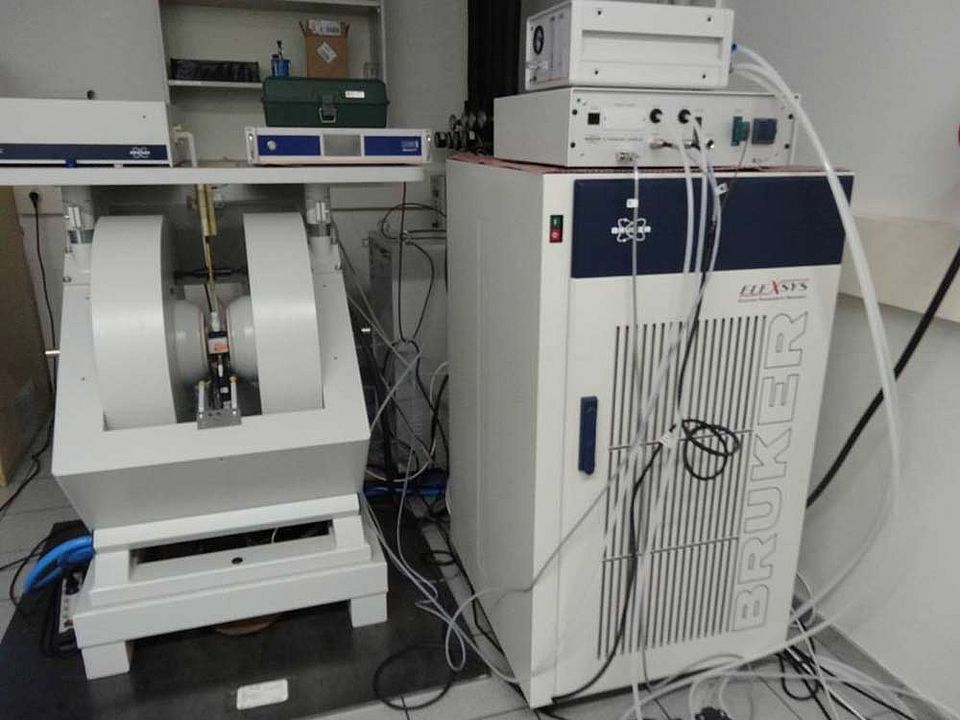
The Electron Spin Resonance Facility of the Chemistry Department of the University of Basel is addressing research at the interface between inorganic chemistry, organic chemistry, biology, medicine.
We provide the expertise and instrumentation (Brucker ElexSys E 500 at 9.66 GHz, X-band CW EPR spectrometer operating from 2 up to 370K) to characterise paramagnetic centres in a variety of systems:
- free radicals formation and decay (by direct ESR and spin trapping) in chemical (radical polymerizations, electrochemistry) and biological reactions (donor/acceptor systems, enzymatic systems, antioxidants influence),
- metal centers in small molecular weight complexes and supramolecular systems (polymers, proteins and combination of thereof)
- specific regions in polypeptides (dynamics and accessibility of the side chain, local polarity and electrostatic potential), and proteins (prediction of the secondary structure, insertion in various membranes) by spin labeling approach
Contact:Dr. Ionel Adrian Dinu
2. CLSM / FCS / FCCS Facility
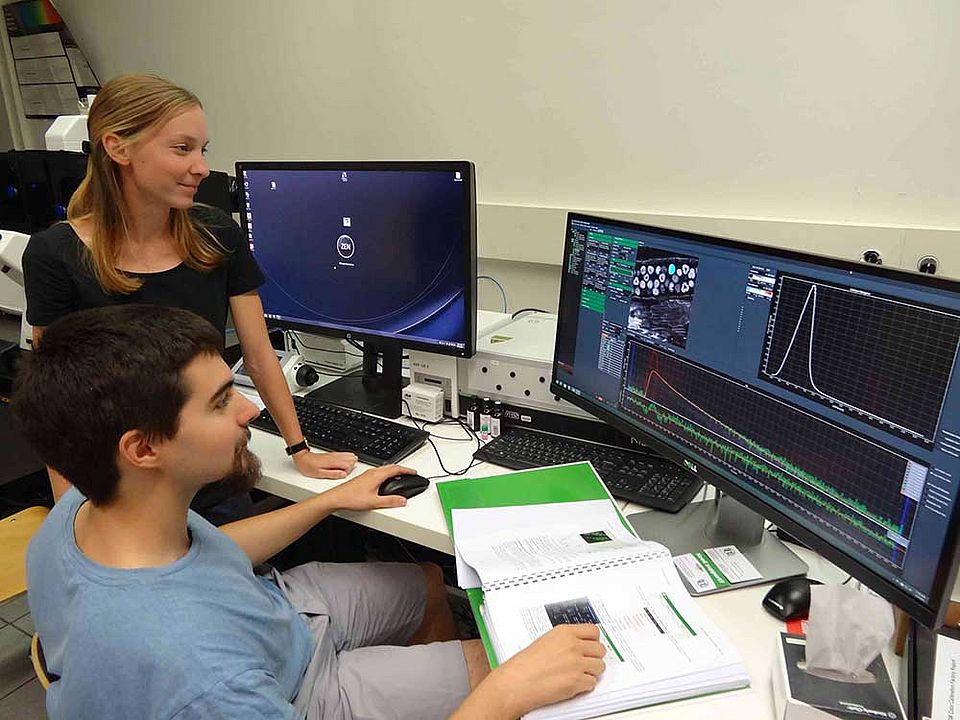
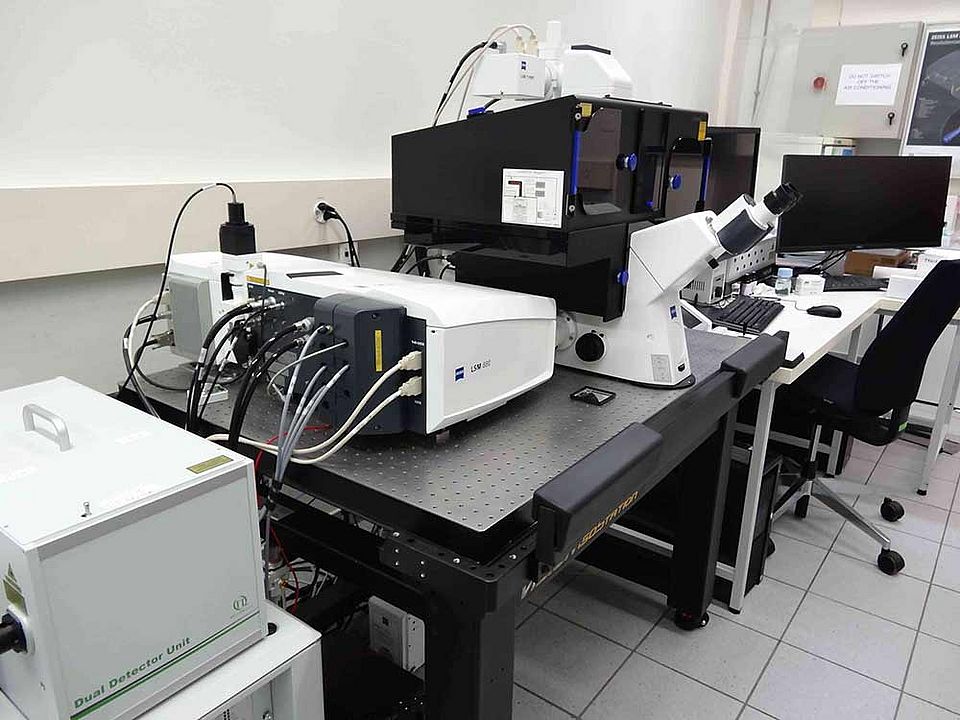
A new ZEISS laser scanning confocal microscope (LSM 880 with Airyscan) with a completely integrated Picoquant upgrade for fast superresolution and sensitive confocal imaging, FCS, FCCS, FLCS, FLCCS, FLIM, or FRET.
ZEISS LSM 880, inverted microscope ZEISS Axio Observer.Z1 and Airyscan with:
- 2 multi-alkali + 1 GaAsP R/FL detection channels
- 6 laser lines 405, 458, 488, 514, 561 and 633nm, Transmission PMT
- Incubation chamber
Picoquant upgrade with 2 pulsed lasers (485 nm and 640 nm) and sensitive detection modules
Contact:Dr. Michał Skowicki, Piotr Jasko
3. Cell Culture Facility
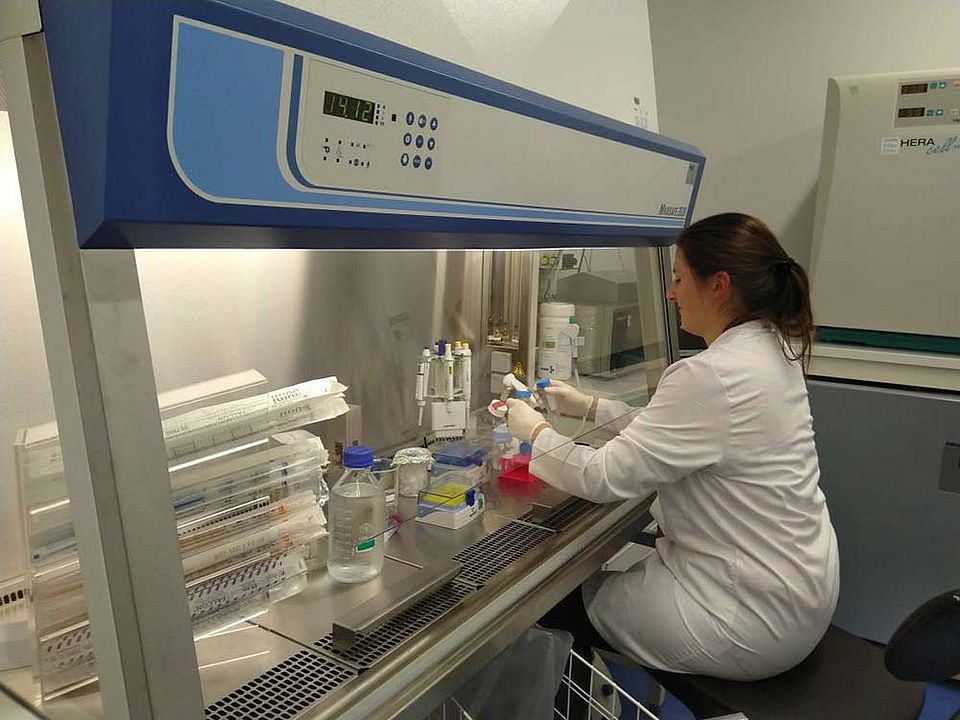
- MTS assay to determine toxicity of various nanoassemblies
- Mechanism of cellular uptake and localization of nanoassemblies
- Determining the interactions of nanoassemblies with the cell surface and cell surface receptors
Contact:PD Dr. Cora-Ann Schönenberger
4. Microbiology and Enzymology Lab
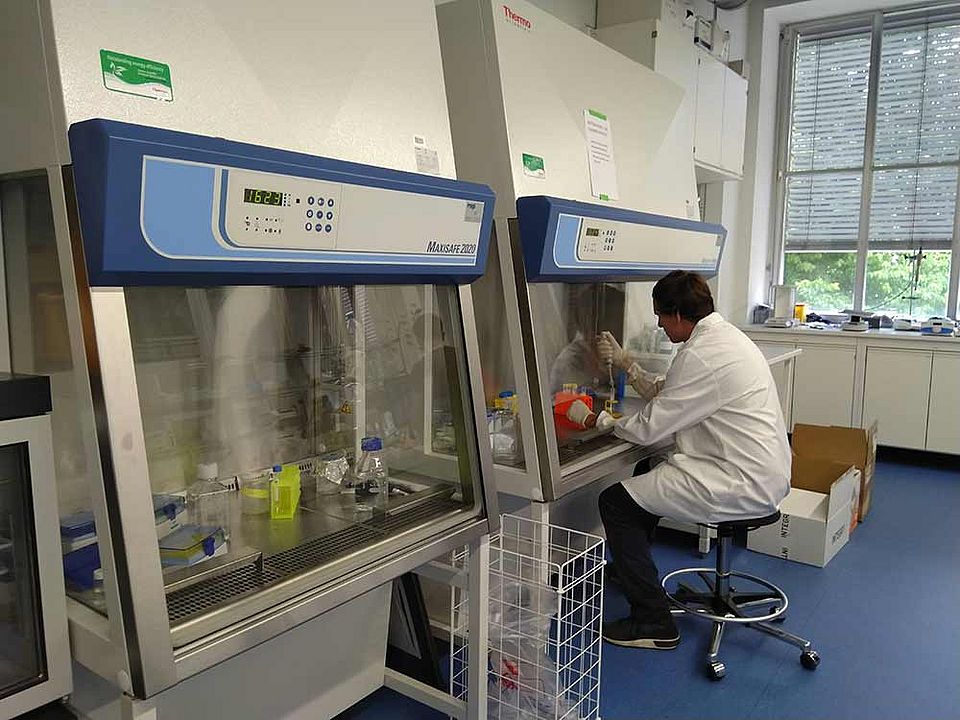
Lab dedicated towards handling of bacteria that expresses proteins and enzymes of interest, as well as testing of antimicrobial surfaces against various bacterial strains.
- Protein and enzyme expression
- Analyzing enzyme kinetics of compartmentalized cascade reactions
- Determining efficacy of antimicrobial surfaces
Contact:PD Dr. Cora-Ann Schönenberger, Dr. Shabnam Tarvirdipour
5. Peptide Synthesis
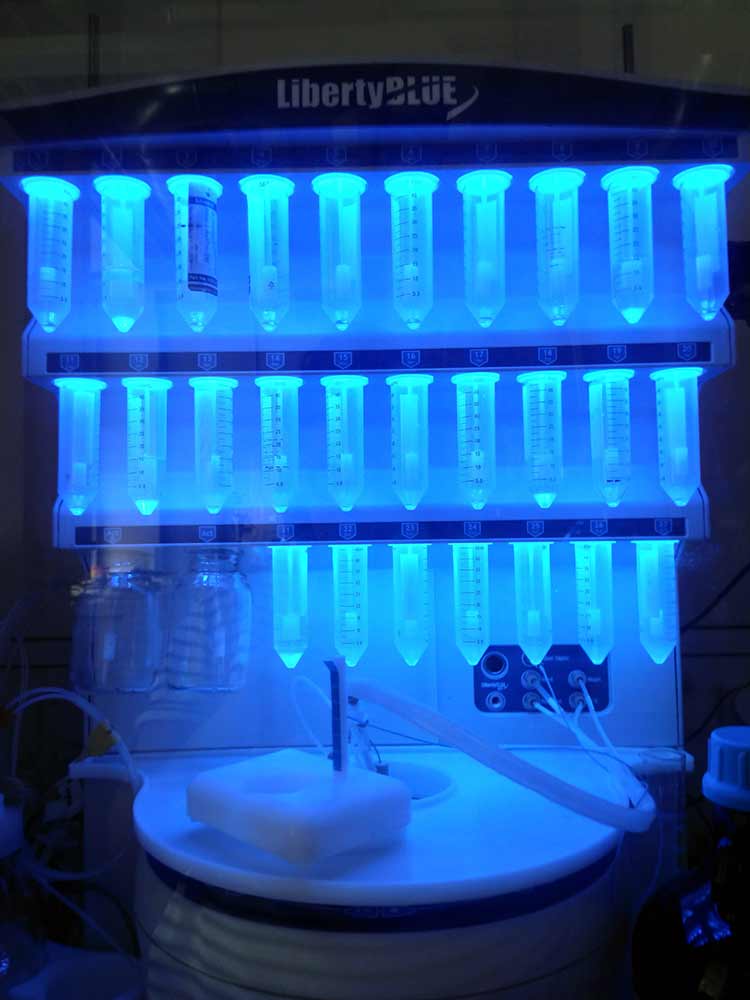
Area dedicated to the design and synthesis of novel amphiphilic peptides.
- Antimicrobial peptides
- Amphiphilic peptide self-assembly into micellar structures
Contact:Dr. Shabnam Tarvirdipour, Piotr Jasko
